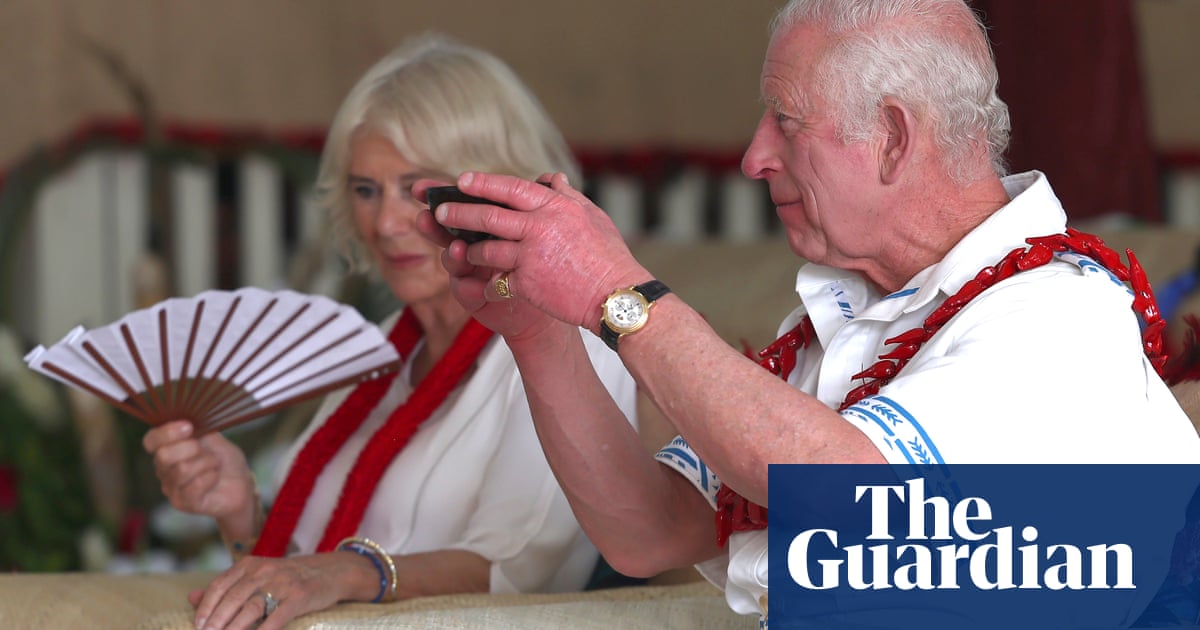Kava, the traditional Pacific drink, was served to King Charles III on Thursday while he was declared “high chief” of Samoa on an 11-day tour of the island nation and Australia.
The brew made headlines in 2022 when Australia’s former deputy prime minister was hospitalised after mistakenly drinking too much kava at a ceremony in Micronesia.
But what is the peppery-tasting, slightly intoxicating root drink?
Here’s everything you need to know about kava.
What is kava?
Kava is a drink made from a powdered root containing kavalactones, which have some psychoactive properties. It most likely originated around Vanuatu before people spread it across the Pacific, where it is enjoyed ceremonially and socially, according to Dr Apo Aporosa, senior lecturer in Pacific Health at New Zealand’s University of Waikato.
The plant is grown around the equatorial Pacific and enjoyed around the world, with other names including “kava kava,” “ava” in Samoa, “awa” in Hawaii, and “sakau” in Pohnpei.
How is kava made?
Kava is made from the root or stump of the kava plant Piper methysticum. The root is pulled from the ground, washed and in some cases dried. It is then pounded or ground down, according to Aporosa, who has Fijian heritage and is a leading researcher on kava.
The powder is then mixed and sifted through with water, either through porous cloths or, in the case of King Charles, through a sieve made of dried bark. Kava can be diluted or strengthened by varying the amount of water added.
What does kava do?
Kava is a depressant, with short-term effects include being more calm, relaxed, drowsy.
“Some have described kava as feeling like being stoned in your body, relaxed. However, your mind is clear, there is not inebriation,” Aporosa says.
While kava sales and use have faced restrictions in the UK, US and Australia due to potential health risks, the drink is safe when consumed in moderate doses, according to Dr Julia Butt, who has researched kava and lectures in psychology at Edith Cowan University.
“You’re not going to get highly excitable, hallucinate or anything like that,” she says. “It’s not a significantly harmful drug at all.”
Kava drinkers have also felt numb or tingly mouths, with high dosage potentially causing sedation, red eyes, indigestion or nausea, as Australia’s former deputy prime minister faced. Long-term use can result in a scaly skin condition, says Butt.
How do you drink kava?
There are cultural protocols for how to drink kava, thanks to the drink’s ceremonial importance in Pacific island communities.
“You drink kava by by drinking the contents of the cup that you’re given in one go,” Aporosa says.
Drinkers typically have about one cup of kava every 10 minutes over long period of time, or around 600ml per hour, he says.
Kava can be mixed and served in ceremonial vessels, such as the wooden tanoa bowl in Fiji, and enjoyed while sitting in a circle on mats or on the floor. Kava bars have also arisen in Fiji and Vanuatu, reflecting a shift from consuming the drink in ceremonies or homes to more commercial spaces.
However, the focus is not traditionally on the drink itself but on the relationships and connection enjoyed while drinking, so kava has a key role both in formal ceremonies and social settings, Aporosa says.
He says the cultural process of serving the king kava in Samoa was about “the Monarchy unifying with the people of Samoa. It’s vastly more than kava as a drink.”
“If I came around to your house tomorrow, I would bring kava with me. Kava is about … connection, unity, understanding and learning from each other.”












